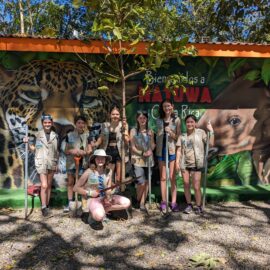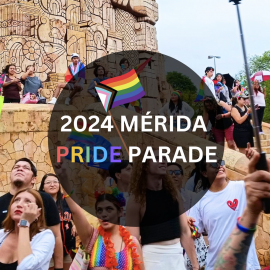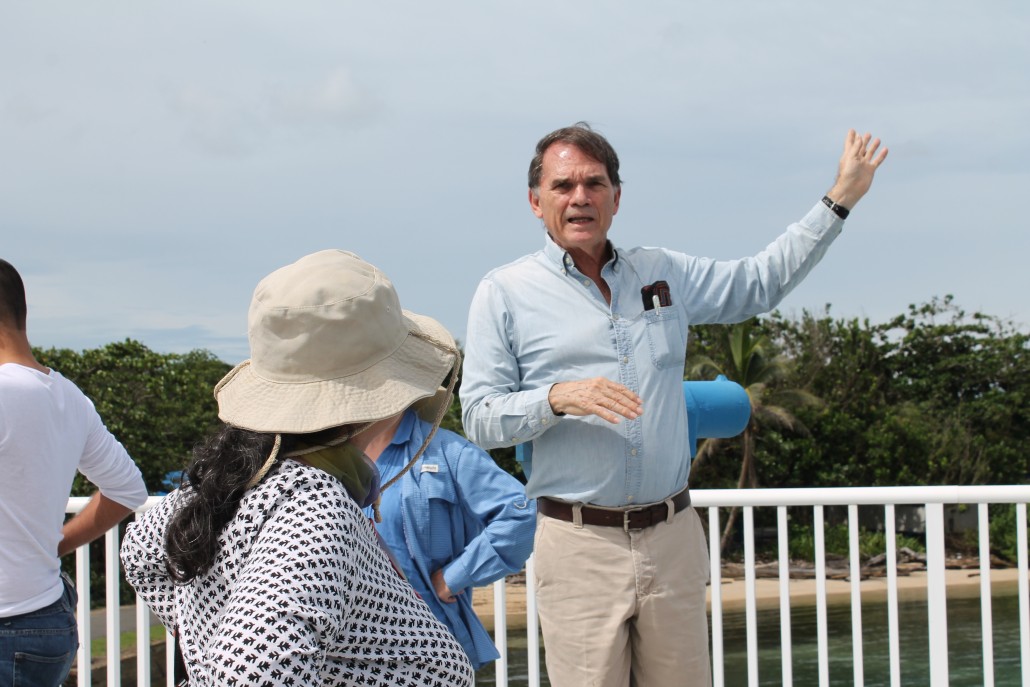Destination Spotlight
Meet Smithsonian Expert Dr. Stanley Heckadon-Moreno
At the mouth of the Panama Canal, Smithsonian Tropical Research Institute’s Galeta Point Marine Laboratory is home base for some of the most important environmental monitoring and local education in the region — and Dr. Heckadon-Moreno is its caretaker. This mangrove forest, coral reef, and seagrass community is just one STRI stop on our Smithsonian University Travel Program to Panama.
WorldStrides: Tell us about your role at STRI.
Dr. Stanley Heckadon-Moreno: I have been at STRI since 2000, working to protect this important tropical habitat, promoting scientific research and providing educational opportunities for Panamanian students. We provide educational programs, materials and research facilities at the mouth of the Panama Canal, Caribbean side.
I manage the education programs here. They started with just 60 students from a local orphanage in Colon coming to Galeta to learn about biology, research, conservation and marine life. Through this program, these 60 students learned how to be naturalist guides. In the last 17 years, we have taught over 110,000 Panamanian students. We also support student volunteers, train them to become naturalist guides and encourage them to study marine biology or other conservation sciences. To help support education in schools, I have created a series of educational posters that are distributed throughout the country.
When I am not working on the education programs, I work with professional and student researchers and oversee the Robert Stimming Internship Program for Panamanian college students. I also work with donors, garnering more support for the mission at Galeta and on public outreach programs.
WorldStrides: How did you get into your field?
Dr. Stanley Heckadon-Moreno: I studied anthropology at the Universidad de los Andes in Bogota and then hitchhiked through Colombia, ending up in a fishing village on the islands of San Bernardo. There I met and learned about black fishermen, the topic that became my undergraduate thesis. After San Bernardo, I boarded a tugboat and traveled throughout Colombia on the Magdalena River. I boarded a contraband boat in on the Colombian coast and departed for Panama. These early experiences with impoverished communities, learning about their relationship with the environment and natural resources, helped me decide on my future professional and research work.
In Panama, I got a job at the Ministry of Community Development working on indigenous affairs. Working with the most marginalized people in Panama and moved by the lack of health care and schools, I was inspired to work as an advocate for indigenous Panamanians. Through my job in this ministry, I worked to preserve indigenous lands in Panama, which now account for twenty-five percent of the country.
I left Panama to get my master’s and Ph.D at the University of Essex studying Latin American agrarian reform and rural development as well as the relationship between the peasants and the rainforest deforestation due to these reforms. I came back to Panama and worked as the Director of Economic Policy and Planning, studying the Panama Canal Watershed area and the people living on this land. For a short time, due to the political situation, I left Panama. When I returned, I was planning to immigrate back to Costa Rica but stayed in Panama to help protect the watershed. As the Minister of the Environment in Panama, I worked with my team to protect the watershed and make it a national park. In 1995, I joined the Smithsonian. I worked on a seven year project monitoring natural resources in the canal watershed and since 2000 have been working at Galeta.
WorldStrides: What advice do you have for students who’d like to pursue your line of work?
Dr. Stanley Heckadon-Moreno: Very few people know exactly what they want to do. I always tell my students and interns that they need to try different things. My advice is take different subjects, follow your sixth sense; what you study is a decision you make with your spirit. See what grabs you. A friend of mine suggested anthropology to me because I liked to read a lot. It grabbed me – after my first class, I knew this was it. Try and keep trying until you come to a subject where you feel love at first sight. Don’t lose hope if there are many disappointments. Also, get experience – volunteer, join an NGO, intern, and be proactive. You’ll meet interesting people you’ll get to see work being done, get your hands dirty, get to know your universe and mankind, cultures, beliefs. If you are going to do a project, start small, build on success block by block. Lastly, learn languages, learn Spanish, learn English – cross-cultural communication makes a world of difference.
WorldStrides: Tell us something few people know about Galeta.
Dr. Stanley Heckadon-Moreno: One of the most interesting things about Galeta is that it played a big role in the history of the defense of the canal. Before it became a Smithsonian site, it was a U.S. Naval Critical Intelligence Facility. It was used in World War I, World War II, and the Cold War and was the last position the Navy wanted to keep in Panama. It was their eyes and ears in the hemisphere
WorldStrides: When you go home each day, what makes you most proud?
Dr. Stanley Heckadon-Moreno: That I have had the opportunity in life to learn so much from my work. Starting off in anthropology, then sociology, then working with scientists; I have been able to learn so much from my work with STRI. Building relationships with scientists – I learn from them about the environment and they learn from me about how people interact with the environment we live in. I’ve been able to be put into places I never dreamed I would, playing a role which allowed me to fight for the rights of the indigenous communities, protecting the canal watershed by creating the national parks and now educating more than 100,000 students and 600 teachers. By communicating complex issues in simple straightforward terms, I’ve been able to educate so many Panamanians about the importance of the environment.
About Stanley Heckadon-Moreno
Stanley Heckadon-Moreno is the Director of Communications and Public Programs at Galeta Point Marine Laboratory, a part of the Smithsonian Tropical Research Institute (STRI), as well as a staff scientist emeritus. He is a pioneer of the environmental movement in Central America, and first joined the Smithsonian Tropical Research Institute as a research associate in 1983. As manager of its Galeta Point Marine Laboratory, he has helped to place the preservation of Panama’s mangroves on the national agenda. In the early 1990s, with the end of military rule, he became director general of Panama’s National Institute of Natural Renewable Resources. He is a founding member of the Center for International Forestry Research and has lectured extensively to policymakers on issues of development and conservation. He has published several books, including Naturalists on the Isthmus of Panama (2004).
Learn more about our Smithsonian University Travel Programs.
Related Articles

The 2024 WorldStrides Student Photo & Video Contest Gallery
At the mouth of the Panama Canal, Smithsonian Tropical Research Institute’s Galeta Point Marine Laboratory is home base for some of the most important environmental monitoring and local educatio...

Girl Scouts: Costa Rica Tour
At the mouth of the Panama Canal, Smithsonian Tropical Research Institute’s Galeta Point Marine Laboratory is home base for some of the most important environmental monitoring and local educatio...

2024 Mérida Pride Parade
At the mouth of the Panama Canal, Smithsonian Tropical Research Institute’s Galeta Point Marine Laboratory is home base for some of the most important environmental monitoring and local educatio...

Rise Up, Take Action: How to Support the LGBTQIA+ Community
At the mouth of the Panama Canal, Smithsonian Tropical Research Institute’s Galeta Point Marine Laboratory is home base for some of the most important environmental monitoring and local educatio...


